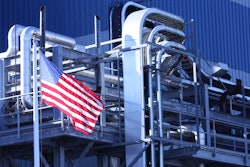
 Jim Stenner
Jim StennerIf it seems as if the business world, including manufacturing, is constantly changing, you’re right. According to research by CEB, “the average organization has undergone five enterprise changes in the past three years.” Most businesses expect more change in the next three years, the report says.
Many changes, such as implementing advanced technology, can have a tremendous positive impact on an organization: increased productivity, increased revenue and optimized manufacturing processes. Many executives assume that everyone understands the purpose and results of those initiatives; however, the number of changes and competing priorities can be frustrating for employees.
For any change initiative to be successful, everyone involved in the mission must understand the objectives and appreciate the results. I look at the Apollo space program as an example of how people rallied around a goal — in this case, to be the first nation to land a man on the moon.
“We choose to go to the moon!” — President John F. Kennedy
In 1961, the Soviet Union launched the first human into orbit around the Earth. In response, President Kennedy decided to pursue a manned lunar landing. In an address to Congress, he likened the “Space Race” to a battle between freedom and tyranny. To the American people, Kennedy painted a vision of space as the new frontier and drew a comparison to pioneers exploring the West.
Just as Kennedy created a vision of the lunar mission as a challenge that Americans should win, your organization should develop a clear, consistent message that can be told in a shared story for the entire enterprise. This story should paint a compelling view of the future and set realistic expectations of what will happen along the way. Above all, your message must answer the age-old question, “Why change?” Without that foundation, an organizational change can lose focus, waste resources and ultimately leave the company feeling adrift.
“I think we're going to the moon because it's in the nature of the human being to face challenges.” — Neil Armstrong
A considerable amount of research and development, as well as substantial funding, went into the Apollo missions. Apollo 7 transmitted the first live television broadcast from a manned American spacecraft so that the public could celebrate the achievement. The Christmas Eve broadcast from Apollo 8 was the most watched program at the time. On July 16, 1969, eight years after the first test, the dream was realized in Apollo 11 when Neil Armstrong took “one small step for man, one giant leap for mankind.” Broadcasting these successes was essential to ensure continued public support of the space program.
Once the vision for your company’s transformation has been mapped out and the story drafted, it’s time to communicate. This step is crucial; the communication plan is the visible representation of the change program. It should encourage employee engagement and allow for honest input.
This plan should not be one-size-fits-all. Consider the wide variety of people who will be impacted by the change — executives, employees, partners, suppliers and customers. Use a variety of methods to communicate — written, video, small group discussions, town hall meetings and social networks — and allow for interactivity in the communications. Listen to any comments and feedback to validate that employees understand the communications and make adjustments as needed. Most important, be consistent in communications. Many of these groups are interconnected; inconsistency can lead to lack of trust in the ability of those leading the change to deliver the intended results.
“There are footprints on the moon. Those footprints belong to each and every one of you, to all of mankind…” – Buzz Aldrin
There were many skeptics who questioned the ability of NASA to achieve the president’s goal. Throughout the 1960s, NASA developed new hardware and a vast infrastructure to support human space flight, and there were dozens of unmanned and manned missions that tested those capabilities. NASA employees and contractors understood the significance of their mission and worked tirelessly to achieve their objectives.
Although change can be intimidating, most employees will support enterprise goals when they understand what needs to be done and can take the first few steps. Communication fuels curiosity, creating a forward momentum. Once employees begin to take action, they develop a personal stake in the change.
The challenge for many companies is how to get this commitment deep into the organization. One solution is peer advocates. Early adopters of change have the ability to leverage their relationships and influence successful organizational change. By translating the broad messages of the enterprise story into specific language their peer group can appreciate, these advocates provide greater insight into to why the end result is worth the effort, and what impact they can expect during the change process.
Full speed ahead!
As small to mid-size manufacturers begin to implement more advanced technology, it is vital to balance progress with humanity, and to manage expectations and the fear of change. Resisting change can be dangerous, as organizations could lag behind competitors and eventually be forced out of the market. Successful change hinges on process, acceptance and new behavior. By creating understanding, piquing interest and building commitment, your employees are more likely to embrace the future state of their organization.
Jim Stenner is Director of Product Management for Aptean Made2Manage & Aptean Intuitive ERP.






















